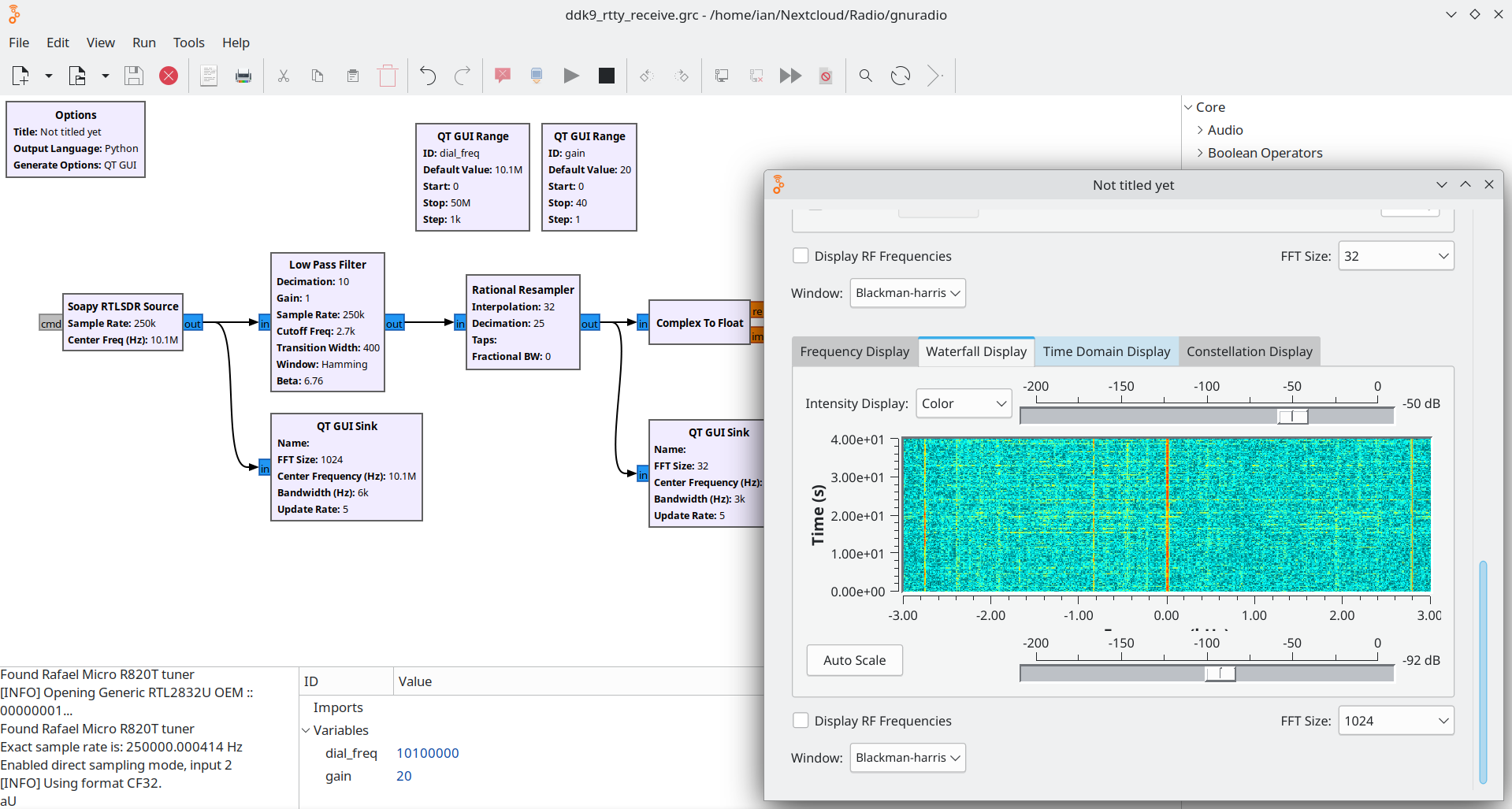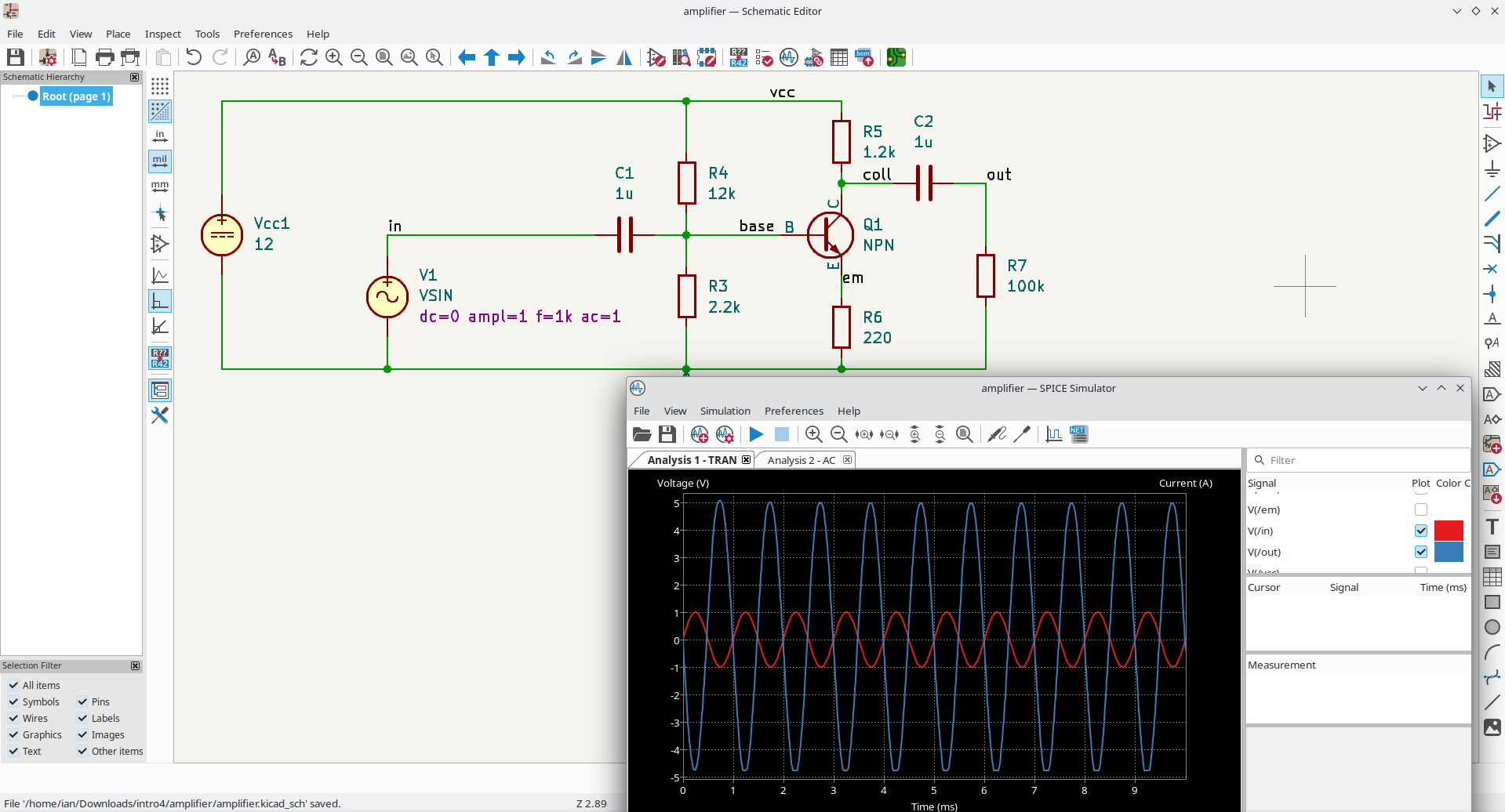If you’ve read the first post in this series or are playing along yourself, you’ll be aware of the 52 Week Ham Radio Challenge. If not, hit up that link for the details!
This post covers the challenges from weeks 21-24, which were:
- Create a GNU Radio flowgraph!
- Simulate an electric circuit!
- How many language can you hear on the radio this week?
- Make a contribution to an Open Source ham radio software package.
Week 21 (19-25 May): Create a GNU Radio flowgraph!
Week 21’s challenge was to create a GNU Radio flowgraph, and like almost everyone, I chose the GUI-based GNU Radio Companion software to do this with.
I was aware of GNU Radio but had never really dived into it before. I started off by following an online tutorial to create a broadcast FM receiver using an RTL-SDR.
 GNU Radio flowgraph for an FM receiver
GNU Radio flowgraph for an FM receiver
However, this builds heavily on the “WBFM Receive” module which seems to be doing a lot of the hard work for me. I decided I’d try to implement an SSB receiver, which doesn’t come built-in and surprisingly there don’t seem to be a lot of online tutorials for.
Here’s where things started to unravel, with quite a few cases where I pointed SDR++ at a signal (e.g. the ever-reliable FT8 on 14074kHz or DDK9 RTTY on 10100kHz) and got the waterfall plot I expected, when I couldn’t recreate that in GNU Radio. Then when I went back to SDR++ in frustration, the signal wasn’t there either, and AGC/manual gain controls also didn’t seem to have any effect.
 GNU Radio Companion showing a flowgraph and a waterfall display
GNU Radio Companion showing a flowgraph and a waterfall display
I’m starting to doubt not only my (obviously lacking) GNU Radio skills, but also my RTL-SDR itself. Perhaps this one is best shelved for another day.
Week 22 (26 May - 1 Jun): Simulate an electric circuit!
For week 22, the challenge was to simulate an electric circuit. I started off using the recommended web-based tool, CircuitLab, but quickly found that it had a strict time limit before forcing you to create an account, and not saving your previous work. Since I knew that KiCad also had some built-in circuit simulation capability using SPICE, and no associated limitations, I decided to use that instead. It also seemed a more useful skill to learn, to do this with KiCad rather than CircuitLab.
I set out to make a simple common emitter amplifier circuit. Drawing the schematic wasn’t a problem, but I did have to read up on the simulation capability as that aspect was new to me.
Initially I was getting roughly Vout=Vin, a sure sign that the circuit wasn’t working as I expected. So, I added various test points to the circuit to track down the source of the problem. It turned out to be zero voltage on the Vcc rail—while I had used a SPICE symbol for the sine wave input, I had just used a standard voltage point for Vcc, and this was not recognised as anything by the simulator. I switched this for a SPICE VDC source, and it all worked as expected.
 Common Emitter amplifier schematic and simulation in KiCad
Common Emitter amplifier schematic and simulation in KiCad
Most of my previous KiCad experience has been simply connecting ICs together, so I’m still a long way off being able to design and simulate analog circuitry with confidence. However, it’s great to know the functionality is there and it really did help me figure out a problem with the schematic, so this week’s challenge has definitly got me thinking that some proper circuit design could be in my future.
Week 23 (2-8 Jun): How many languages can you hear on the radio this week?
A nice simple one this week. Although poor band conditions and my own travel schedule didn’t leave much time for radio, I spent a few minutes here and there scanning the bands. During this time I heard English, French, Dutch, German, Italian, Greek and Russian.
The challenge also asks how I identified the languages, and as with most Europeans, I guess the answer is just by knowing enough of the major languages that it’s kind of obvious what it is when you hear it. My assumption of Russian was based on the callsign and a “do svidaniya”, and the Greek I’m not sure I’d have got at all without recognising “kalispera”, but the others were all easily identified.
Week 24 (9-15 Jun): Make a contribution to an Open Source ham radio software package.
I’m going to claim this one a day early, as the coming week promises to be a busy one. Hopefully I can claim my own software packages here, as for the last few days I’ve been working on adding a Worked All Britain layer to Field Spotter and the QSO Map tool. The layer lives in its own project, also open source, so anyone who wants a WAB grid on a Leaflet map can grab it here.
If it needs to be someone else’s project, all I can claim so far this year was fixing a bug in PoLo, but that was way back in February. My spot map feature for PoLo has been stuck in PR for a while now, so unfortunately I can’t see that going live soon.
That’s all for this round-up, see you in mid-July for the results of weeks 25 to 28!
Comments